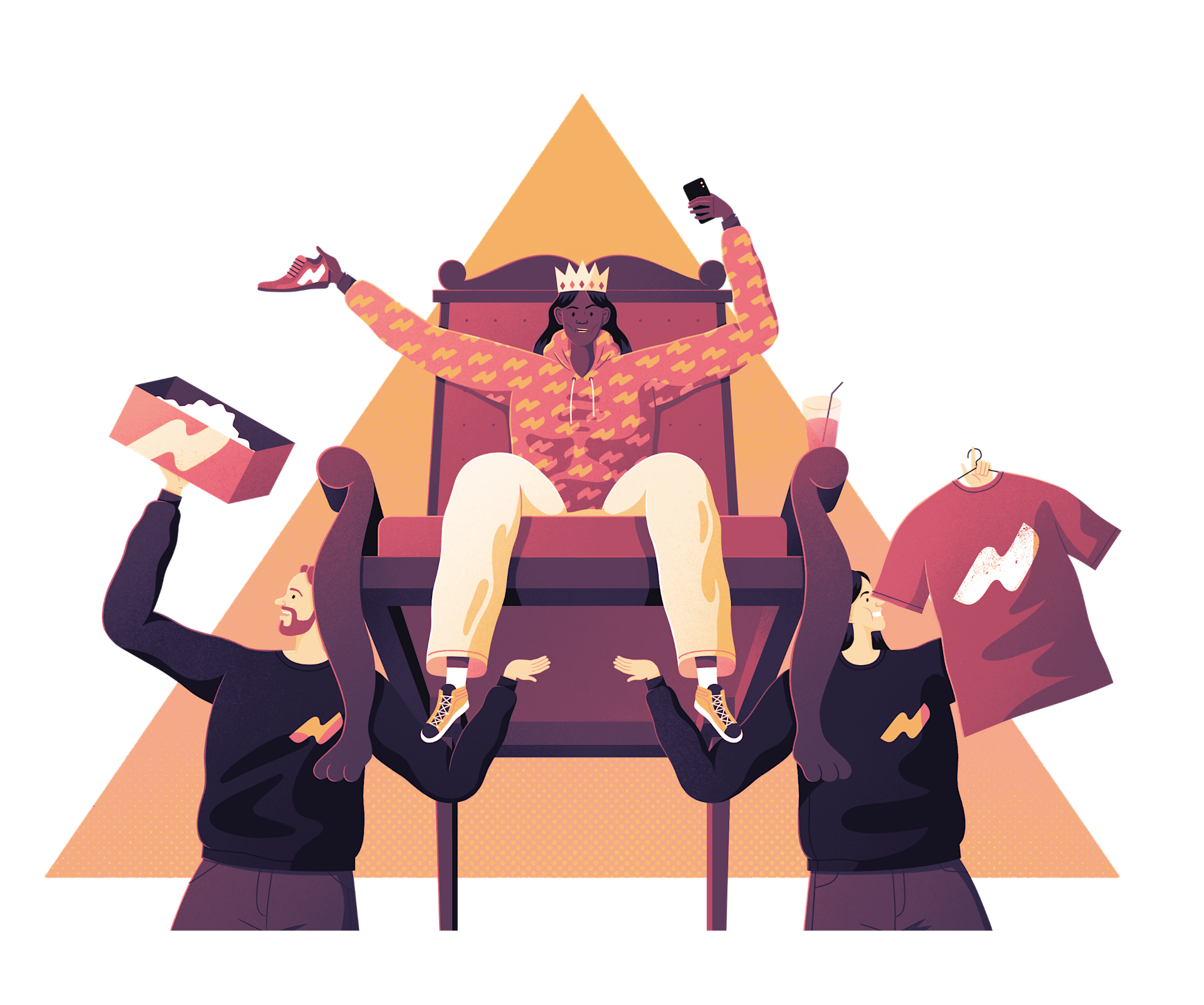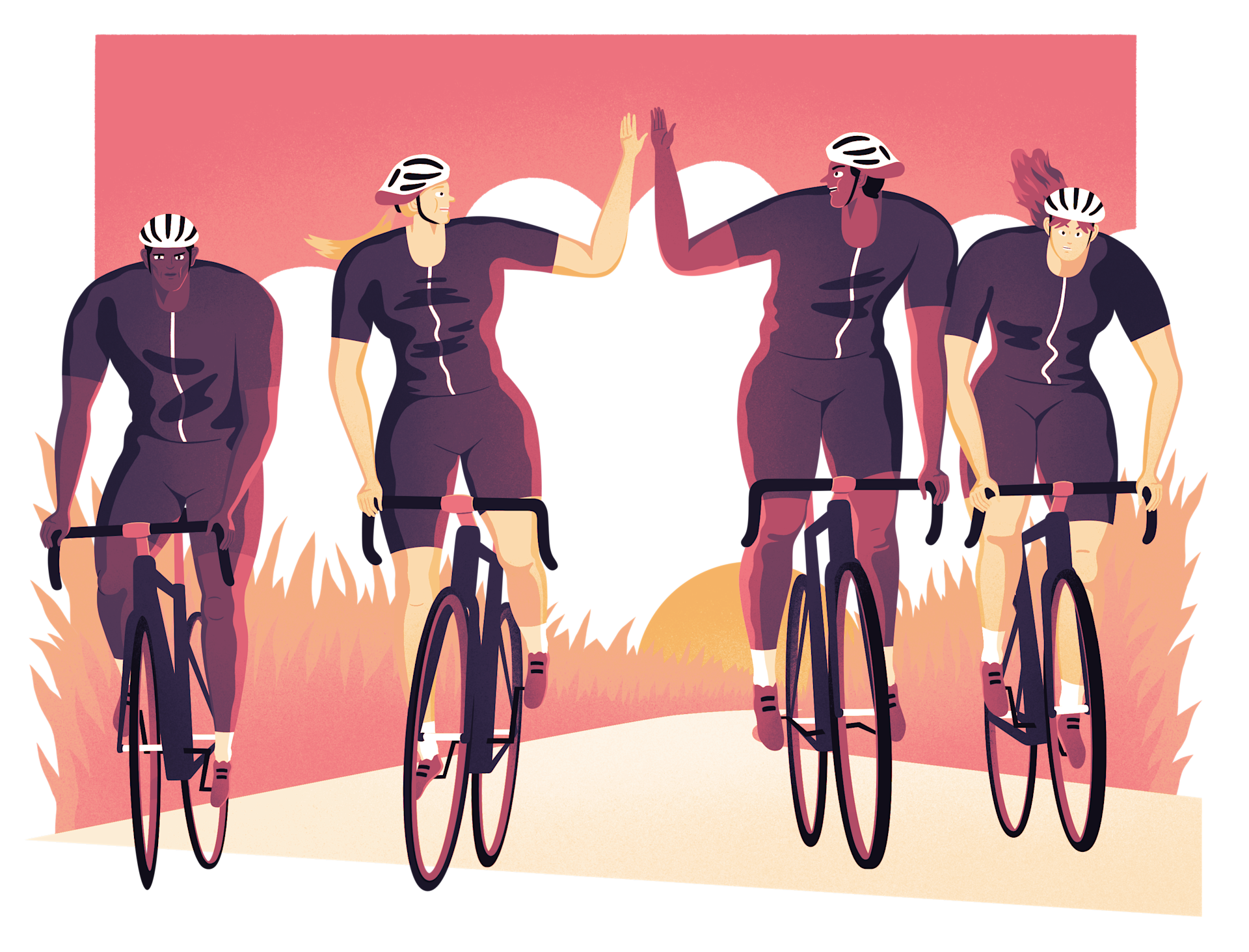The best customer is the one you already know
Nothing is more attractive than loyalty. But how are loyalty strategies changing?
8 min read

We’re used to citing it as a marketing goal, and for good reason.
Statistics confirm what feels instinctively true – that in any competitive market, the best customer is the one you already know.
Research from Invesp on Customer Acquistion vs. Retention, finds it costs 5x less to market to an existing customer than a new one. Customer Life Time Value is estimated at around 306% higher for consumers who are engaged according to Motista.
But what does brand loyalty really mean in practice? Key Performance Indicators can distract from the fact that the term points to a vast range of behaviours. It could mean passing over cheaper or better suited competitors, listing a visit to a particular store on a holiday itinerary, or at the extreme end of the scale, opting for a logo-inspired tattoo. In its simplest definition however, loyalty is a human emotion both arising out of, and driving, an ongoing connection.
Loyalty strategies are often associated with ‘rewards programs’. But any initiative that builds a connection between a buyer and seller can be considered a loyalty tactic, if the end result is more valuable emotional engagement.
Consider the following examples, with no reward card in sight:
An online forum which allows fans to submit, vote on, and even profit from new product ideas.
A trans-Atlantic flight and brewery tour in which members spent four days socialising with the company management.
An app which acts as your in-store concierge, letting you skip lines, find products, and book personal styling sessions.
What distinguishes these and other innovative approaches is that they focus on relationship-building outside the moment of purchase. Of course, consumers only want a relationship with a brand so far as it meets an expectation. We’ve identified that there are four key strategies a brand can use to build ongoing relationships with their audiences, each of which targets a particular set of consumer expectations.
Reward loyalty
The foundational strategy is the ‘reward’ approach, which makes it attractive for a person to continue being a customer of your brand. Tactics which fall under this approach aim to make every interaction with a brand more enjoyable than with competitors. Traditionally this meant offering gifts or discounts to make goods or services seem more enticing (there’s nothing like paying less to make spending money more enjoyable!) However, transactional tactics are evolving to focus on elevating the entire shopping experience for members (not just the moment of purchase), by making it more convenient, exciting or immersive.
Good reward loyalty strategies don’t only reward consumers for spending money, but also for spending time engaging with or for ascribing to your brand values.

When designing a transactional loyalty strategy, consider not just what benefits or rewards you want to offer to elevate your shopping experience, but what interactions you intend to reward members for. The most innovative transactional loyalty strategies we’ve observed don’t only reward consumers for spending money, but also for spending time engaging with, or for ascribing to your brand values.
The Nike Plus program is a great example of a rewards-based loyalty approach. Nike effectively rewards members for ‘checking in’ to its online touchpoints and flagship locations, like its Nike By Melrose store, by making the whole experience smoother and more engaging. Through the Nike+ app, members can book private styling sessions, unlock items from a members-only vending machine, or have a concierge gather and send items ahead to the changing room while they continue to browse. Members can also skip waiting in queues by paying through the app.
Recognition loyalty
A second approach is recognition loyalty, so named because it caters to the desire to be treated as separate from the masses. For example, through access to a member’s lounge, or a concierge hotline. These tactics are similar to transactional tactics in that people are rewarded with benefits for engaging with a brand. However, the key difference is that there’s an extra emotional benefit which may even outweigh the functional value. In plain speak, this could mean “bragging rights”. But in essence, this approach is about recognising a person not as a customer, but as a unique individual.
Good recognition loyalty strategies stoke the interests that first led people to engage with a particular brand.

This type of approach is most associated with tiered programs made popular by airlines starting from the 1970s. The most innovative recognition loyalty strategies today however seem less focused on creating virtual caste systems. Instead they recognise the interests that brought a person to a brand in the first place and offer the most ardent fans unique opportunities to connect around this shared passion.
Connection loyalty
Whereas the first two approaches focus on fostering a relationship between a brand and an individual — no matter how good the brand relationship, nothing can beat genuine relationships formed between people with shared interests. The third loyalty approach recognises this by recasting the brand-consumer relationship as a person to person connection. Essentially the brand steps into the background and acts as a matchmaker to bring like-minded people together. Rapha Cycling Club is one of the most successful brands in this space, creating a global community of engaged members who can meet and share their passion for cycling whenever and wherever they are. The brand offers an online platform so that members can organise their own rides, even if they’re not near a Rapha ‘clubhouse’.
Connection loyalty strategies encourage consumers to connect with each other around something bigger than the brand.

The most best connection strategies focus on making the buyer-seller interaction feel more human. Your employees are part of your community too, so a good place to start is by letting your customers get to know them as ‘real people’. Lululemon, for example, employs staff who also double as instructors and guides for a roster of activities and heroes them with individual biographies on their websites. Hiring genuine fans and giving them the right training and tools to connect with others around that passion sounds simple, but it may be the most effective way to create a community around your brand.
Empowerment Loyalty
The fourth approach caters to a need which has long topped Maslow’s hierarchy — self-actualisation. Until recently we didn’t expect brands to cater to this beyond offering ways to project a certain image. However, since the dawn of the internet we've seen a huge new wave of joining, and participation, which is shifting how people believe the world should work and where they should fit in. What’s emerging is a new expectation: the right to be involved in decisions that affect us. Which includes those relating to the companies we buy from. In this final relationship type, it’s no longer the brand offering benefits to consumers, but instead brands opening themselves up to their audience, flipping the direction of influence.
Good empowerment loyalty strategies give consumers a direct say in designing how a brand responds to cultural trends.

Next-generation empowerment loyalty strategies are about letting individuals influence how a company uses its resources to ensure their own needs are kept in mind. Those resources can be funding, political powers, access to media, or even resources within the company such as production facilities, mentors, technology and data. American Eagle periodically holds board meetings with a panel of teenagers who help make decisions on where to focus corporate social responibility efforts.
Designing your own loyalty strategy
These four approaches - reward, recognition, connection and empowerment - show that there’s a range of ways to build loyalty relationships with consumers. How then to decide which approaches to apply when designing your own loyalty strategy?
In the past, brands have tended to focus on a single approach. But as markets become more competitive, brands need to work harder to build customer loyalty by catering to a wider range of expectations. Today’s customers increasingly expect brands to cater not just one, but many of the various needs they have across the customer journey. Our approach to loyalty therefore needs to evolve. Remaining competitive means evolving from focusing on only one type of relationship-building, to a multi-dimensional approach. Success lies in first identifying your position in comparison to your competitors and then identifying opportunities in one or more of the other loyalty dimensions to create a differentiated loyalty experience. In doing so, brands can create a network of relationship types that cater to the different needs and expectations.
Key considerations when rethinking your loyalty approach:
- Look past the point of sale - Next generation loyalty strategies focus on relationship building outside the immediate moment of purchase.
- Think multidimensionally - Consumers are multi-faceted - so your loyalty approach should be the same.
- Use the element of surprise – The greatest opportunities to innovate lie in employing strategies that are unexpected or under-utilised by industry players.
- Consider the enablers; Customer experience is only one-third of the equation. Implementing a next-gen loyalty strategy will likely require an evolution of organisational structures and technical architecture to enable change.
Illustrations by Jacob Stead.
All opinions expressed throughout this article are the author’s own and do not necessarily represent those of AKQA or its affiliates.